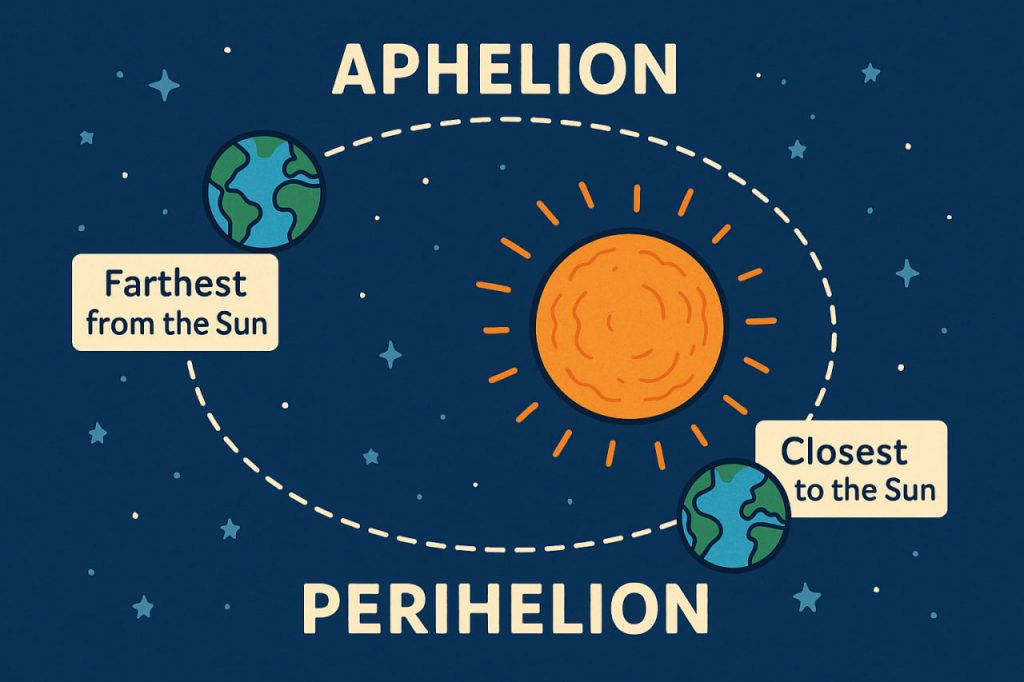Every planet in our Solar System follows an elliptical orbit around the Sun, not a perfect circle. This means the distance between the planet and the Sun changes throughout the year. The points at which a planet is farthest and closest to the Sun are known as aphelion and perihelion, respectively.
What Is Aphelion?
The aphelion is the point in a planet’s orbit where it is farthest from the Sun. The word comes from Greek: “apo” meaning “away from” and “helios” meaning “Sun.” At aphelion, a planet moves more slowly due to the weaker gravitational pull from the Sun. For Earth, aphelion occurs around early July each year, when it is about 152 million kilometers (94.5 million miles) from the Sun.
What Is Perihelion?
The perihelion is the opposite — it’s the point where a planet is closest to the Sun. The term combines “peri” meaning “near” and “helios”. At this point, the planet moves faster in its orbit because the Sun’s gravitational pull is stronger. Earth reaches perihelion in early January, when it’s about 147 million kilometers (91.4 million miles) from the Sun.
Why Do Aphelion and Perihelion Matter?
These variations in distance can slightly affect a planet’s climate and seasons. However, on Earth, the seasons are primarily caused by the tilt of the planet’s axis, not the distance to the Sun. In fact, the Northern Hemisphere experiences summer during aphelion, even though Earth is farthest from the Sun. This seems counterintuitive but shows how axial tilt plays a bigger role in seasonal temperature.
Aphelion and Perihelion for Other Planets
Other planets also experience aphelion and perihelion, but the differences in distance can be much greater. For example:
- Mercury, with a very elliptical orbit, has a significant change in solar radiation between perihelion and aphelion.
- Pluto, though no longer classified as a major planet, has one of the most eccentric orbits — its distance from the Sun varies dramatically.
Conclusion
Aphelion and perihelion are fundamental concepts in orbital mechanics that help us understand how planets move in space. While they don’t have dramatic effects on Earth’s climate, they are crucial for astronomy, space travel planning, and our general understanding of celestial dynamics.
Glossary
- Aphelion – the point in an orbit farthest from the Sun.
- Perihelion – the point in an orbit closest to the Sun.
- Elliptical orbit – an oval-shaped path followed by an object in space.
- Gravitational pull – the force attracting two masses toward each other.
- Axial tilt – the angle at which a planet’s axis is tilted compared to its orbit.
- Orbital mechanics – the study of the motions of celestial objects.


